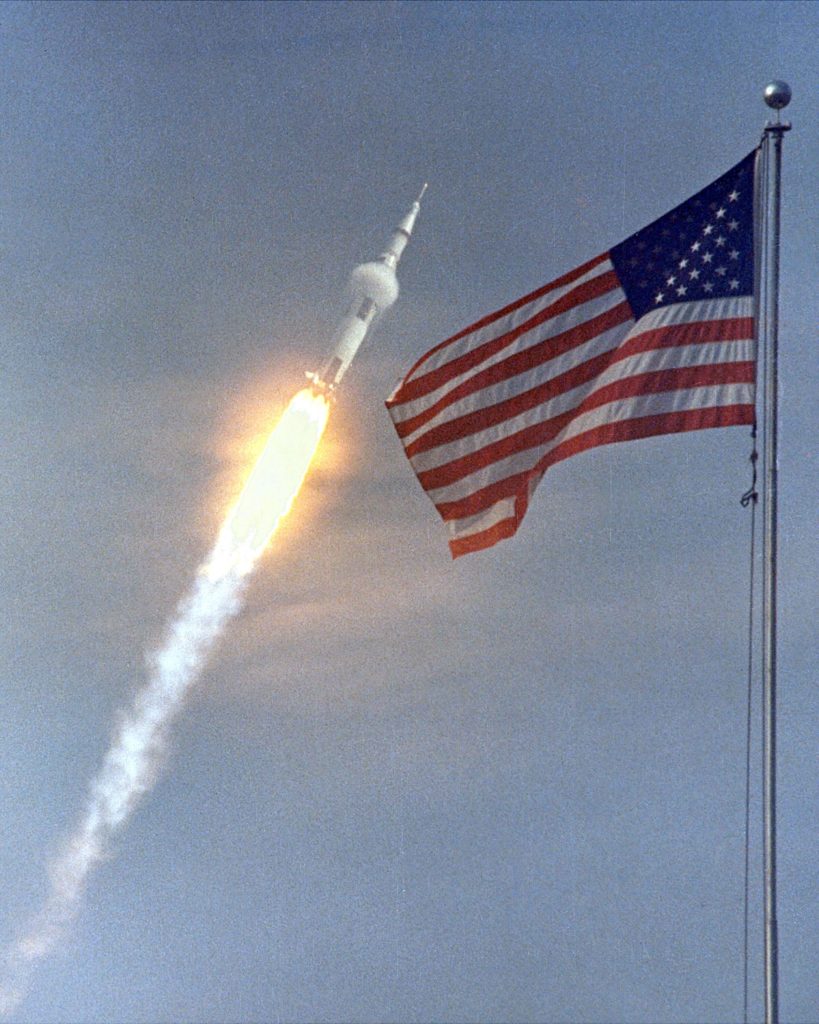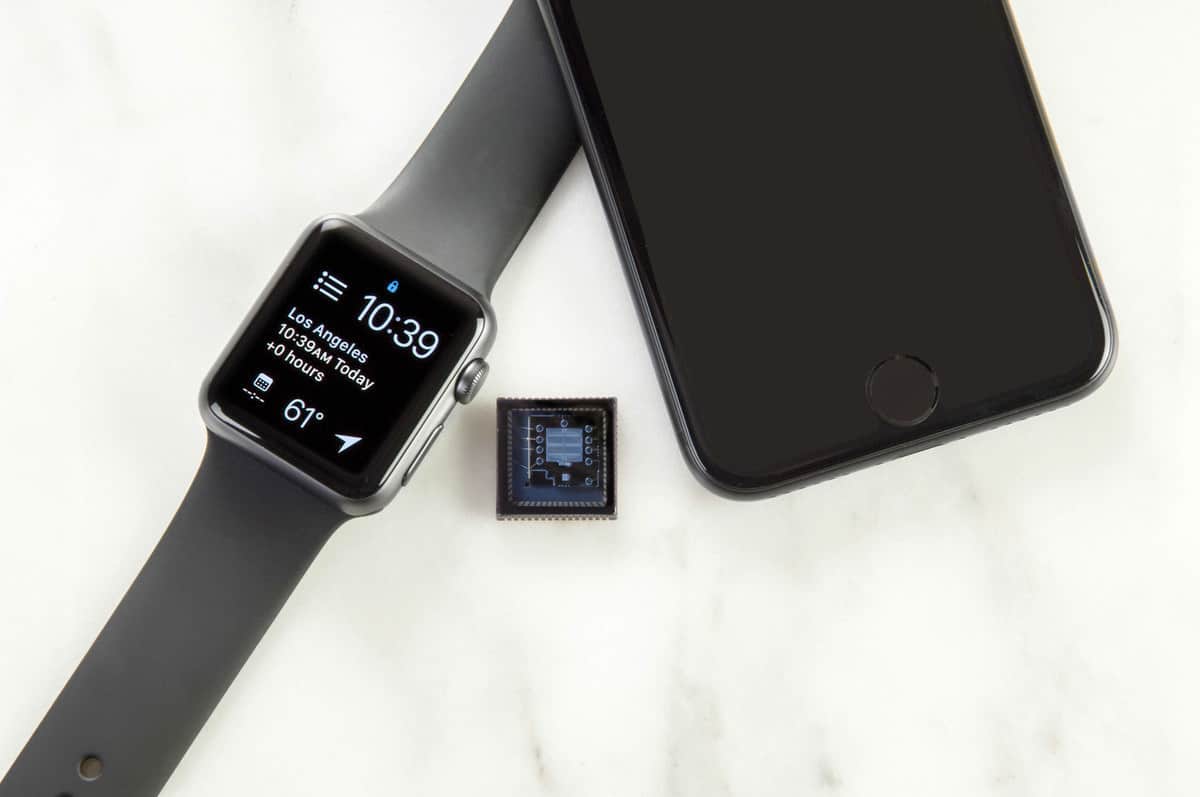Advertising disclosure
Hosting Canada is community-supported. We may earn a commission when you make a purchase through one of our links. Read Disclosure.
Invention of microchips and their use in the Apollo space program

The Apollo 11 rocket launches from Kennedy Space Center on Merritt Island, Florida, on July 16, 1969.
Soon after World War II ended, a new conflict was beginning...
Known as the Cold War, this battle pitted the world’s two great powers of that time: the United States and the Soviet Union. Space would become another stirring "battlefield" for this competition, as each side sought to prove the superiority of its technology.
In early October of 1957, the Soviet Union started the ‘Space Race’ with a bang, leaving the United States in the dust. The US, however, was determined to have the last word after a series of “firsts” for the Soviets.
NASA employed hundreds of thousands of contractors, subcontractors, rocket scientists, engineers, and mathematicians in order to get the job done. It is estimated that the total cost was about $26 billion at the time, which is roughly $260 billion today.
However, the greatest exploration of the 20th century may had never happened without the help of microchips. Most experts and scholars agree that the microchip played an integral role in bringing up to space as part of the Apollo program and later on when the American mission put a man on the moon.
What’s a Microchip?
A microchip, even though smaller than your fingernail, contains computer circuitry called an integrated circuit.
The invention of the integrated circuit is considered by many experts as one of the most significant innovations in contemporary history. After all, most modern products use chip technology nowadays, including everything from your iPhone to the web hosting services which power this very website.

Microchips power most consumer electronic computing devices like the iWatch and iPhone.
Microchips are manufactured from germanium and silicon. They are used for the logic component of a computer system, typically called a microprocessor.
They’re also used for the computer's memory, which is called a RAM chip. The integrated circuit works as a control switch and performs a specific action. A transistor in the circuit works like an on and off switch.
Invention of the Microchip
In 1959, Jack Kilby and Robert Noyce created the first microchip. Kilby worked for Text Instruments and received a US patent for miniaturized electronic circuits. Noyce of Fairchild Semiconductor Corporation got a patent for a silicon integrated circuit.
These vital inventions are nowadays used in many devices besides the computer, but in the 1960s, the Air Force used them to build Minuteman II missiles with these microchips. Later on, NASA purchased about 60 percent of all microchips in America for the Apollo project. The program guaranteed that there would be a market for the microchip. Both NASA and the Air Force also worked with Fairchild Semiconductor to ensure that the chips were reliable.

Fairchild engineers worked closely with NASA to ensure that the chips were designed with rigorous quality control.
The microchips were put through rigorous testing under extreme temperatures and G-force winds, as well as lengthy visual and electrical inspections. As a result, Apollo forced the chip manufacturer to improve the design and revolutionize the process. Computing power leaped forward at a rapid rate because of this hyperbolic time chamber effect.
Eugene Cernan, the astronaut who left the last footprints on the moon, said it best in 2007: "It's almost as if [Presidnet John F. Kennedy] reached out into the 21st century where we are today, grabbed hold of a decade of time, slipped it neatly into the '60s and '70s and called it Apollo."
Importance for Moon-Landing and Space Exploration
President Kennedy did have a goal to put a man on the moon by 1965. The microchip had a profound significance for the Apollo Guidance and Navigation System, which was controlled via the Apollo Guidance Computer. There were two modules, which could only carry one computer on each module alone due to weight, size, and power limitations.
At the time, the reliability of the chip was largely untested, and even though MIT engineers were building the computers, they were unsure if it would work. The US House of Representatives even got involved wondering about the safety of the mission and reliability of the circuits.
MIT worked diligently to vigorously test their circuits and computer systems before the launch, but there was competition from IBM to build a more reliable and conservative circuit, which was known as a Unit Logic Device. MIT had to conduct more tests to persuade NASA to use microchip technology instead.
The result of these tests and trials? No hardware failures were triggered by the Apollo Guidance Computer on either module during the mission.
NASA had required the latest computer technology that was scalable and lightweight, and it had to perform far above the expectations of any other technology at the time. With the production of the chip, Moore's Law was invented in 1965 by Gordon Moore. He saw that the number of transistors on microchips doubled every year.
How has the Microchip Evolved
Microchips are fascinating because they reduced the size of a transistor to that of an ant without losing any power just like Marvel's Ant-Man. In fact, they became even more powerful as more transistors were added.
Due to Moore's Law, we now have microchips so small that they fit on 3 billion or more smartphones. However, research has shown that silicon is about to reach its physical limit.

Currently, it takes about 18 months to create the smallest chip. Threshold transistors do not work properly after they reach a certain size because they currently do not have enough space for both on and off states if made any smaller.
In today's world of the digital now, chips also have too much faster with nearly zero latency and enhanced light detection. New compound semiconductors include gallium and nitrogen (GaN) that provide up to 100 times more improvement on silicon chips. This technology is the latest step in moving forward and lessening circuit limitations.
Conclusion
Microchips changed the game entirely for computers and engineers. We now have small handheld devices that can access everything on a single device. We can watch videos, access all types of information on the Internet, use GPS, and even stare at streams of the Rover on Mars due to the microchips in our phones.
Microchips have been revolutionary in other fields, such as medical devices and identification cards. It's led to the speedier diagnosis of cancer and other rare diseases.
Photo: [Top] Jack Kirby holding a microchip, via EarthSky.org, [Center] Fairchild Semiconductor engineers at work, 1968, via the Computer History Museum










